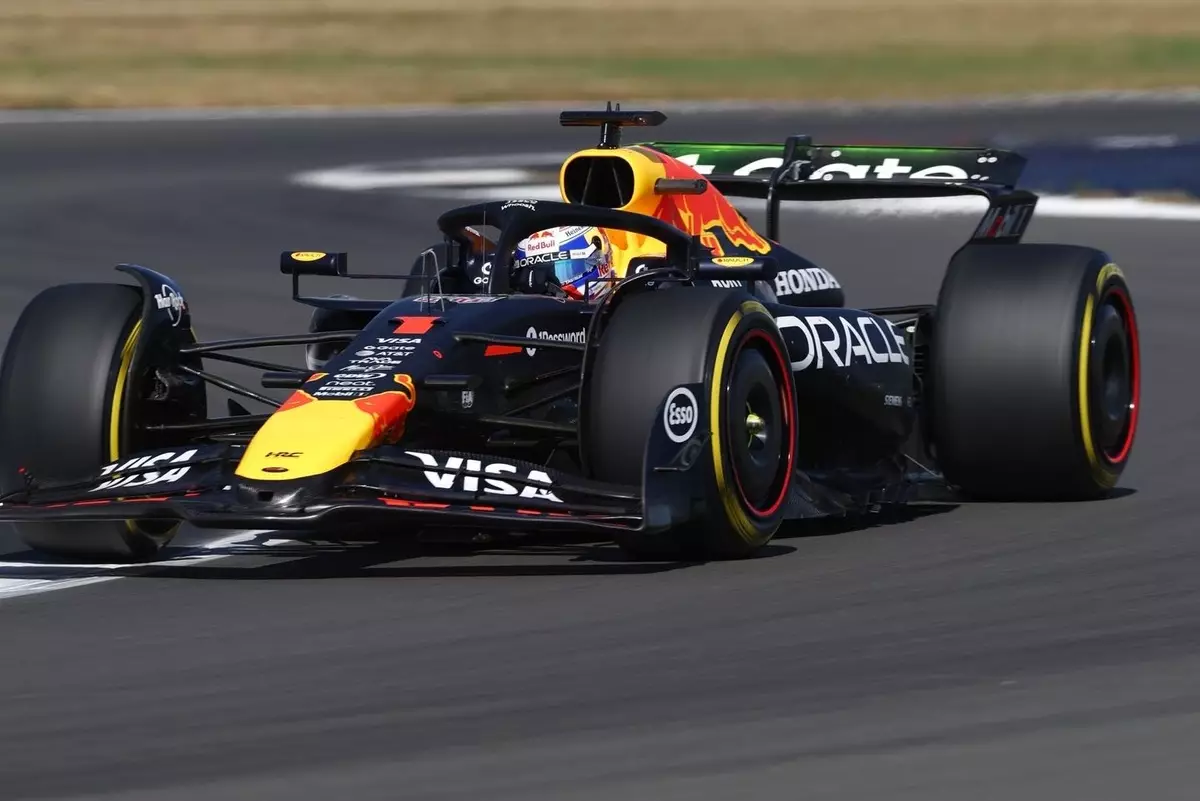The recent Friday practice sessions at Silverstone have cast a stark light on the underlying issues within the Red Bull Racing team, revealing a troubling disconnect between driver sentiment and team ambitions. Max Verstappen, the reigning Formula 1 champion and pivotal figure in the team, expressed clear dissatisfaction, branding the day as a “bad day” and pointing to a lack of car balance. His comments are not mere whines but a reflection of a broader frustration brewing within the squad. Despite his consistent dominance over the past four seasons, this year has proven more challenging, with Red Bull visibly falling behind competitors like McLaren—a team seemingly catching fire in terms of reliability and speed.
Verstappen’s candid critique should serve as a wakeup call; it suggests that the car’s current setup and aerodynamic characteristics are not aligning with his driving style or the demands of Silverstone’s complex layout. His own admission that the car felt “quite poor” and “sensitive to wind” indicates that Red Bull’s development window might be narrowing, especially if such issues persist across race weekends. His observation that the car struggles particularly in tight, wind-affected corners underscores possible deficits in chassis balance or aerodynamic efficiency, factors crucial to maintaining competitiveness in the high-speed, high-precision environment of F1.
Furthermore, Verstappen’s performance in the initial sessions, sitting tenth in FP1 and fifth in FP2, underscores a team that is still searching for consistency and traction. These times, while not disastrous, highlight a car that is not yet firing on all cylinders—a worrying sign given Verstappen’s aggressive pursuit of titles and his reputation for extracting maximum performance.
Team Strategy, Innovation, and the Future of Red Bull are Under Scrutiny
Behind the scenes, team principal Christian Horner addressed the growing speculation about Verstappen’s future, notably rumors linking him to Mercedes post-2025. While Horner tried to dismiss the noise with reassurances of stability, the reality is far more complex. The fact that such questions are persistent indicates a level of unrest or uncertainty within the Red Bull camp. Drivers like Verstappen, who have become the face of the team through their multiple championships, are increasingly anxious about the team’s ability to sustain competitiveness amidst changing regulations and evolving rivals.
Horner’s comments on “new tools” and investment plans reveal a team aware of its current vulnerabilities. The announcement of a new wind tunnel and infrastructural upgrades is positive, but these are long-term investments that take time to yield tangible results. The immediate struggle appears to be fine-tuning the existing packages and addressing aerodynamic issues, such as the problematic balance in high-speed corners, notably in turns 6 and 7. Red Bull’s acknowledgment of giving away “90% of lap time” in those sections shows a critical need for aerodynamic refinement and possibly a tactical overhaul.
More importantly, Horner’s emphasis on “strength in depth” and continuous tuning underscores the inherent challenge of maintaining peak performance amid fierce competition. The team’s aspirations to dominate remain intact, but without swift, meaningful adjustments, Verstappen’s frustrations could deepen, risking a drift away from Red Bull’s orbit if issues remain unresolved.
Sunset or Dawn for Red Bull’s Dominance?
The narrative around Red Bull this season is one of cautious optimism mixed with urgent concern. Although the team boasts a formidable driver lineup and significant resources, its performance dip compared to McLaren threatens to tarnish its legacy. Verstappen’s candid critique exemplifies the athlete’s high standards and relentless pursuit of perfection—standards that may be unmet at the moment.
Red Bull’s future hinges on how quickly they can translate their infrastructural investments into performance gains on track. If they fail to address fundamental aerodynamic imperfections and regain their previous edge, team stability and driver loyalty could be at risk. Verstappen’s open dissatisfaction, coupled with swirling rumors of a potential move, signals that the team’s leadership needs to be more transparent and proactive. They must realize that nurturing the driver’s confidence and delivering tangible race-winning performance are paramount if they wish to retain their superstar and uphold their legacy at the top of Formula 1.


Leave a Reply